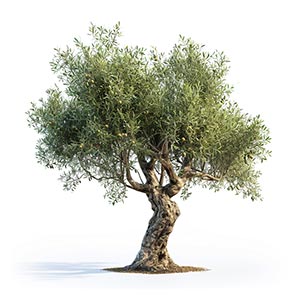The Olive Tree, a symbol of peace and wisdom, is prized in perfumery for its distinct aroma. Extracted from the leaves, bark, or fruit, olive imparts a green, slightly woody, and herbaceous scent. It is often used to add a Mediterranean flair to fragrances, conjuring images of sun-drenched landscapes and rustic groves. The process of extracting olive essence varies, with steam distillation being common for leaves. The olive tree's historical significance dates back to ancient civilizations, revered for its oil and wood.
Natural or Synthetic?
Olive Tree, or Olea europaea, yields olive oil primarily through cold pressing or solvent extraction. Its oil is valued for moisturizing properties rather than its mild, woody-green scent, which is not dominant in perfumery. There are no prevalent synthetic substitutes for olive tree fragrance, as it is not a primary scent ingredient in perfumes. Its use in perfumery is more for skin benefits rather than fragrance.
Fragrance Families Olive Tree Most Commonly Found In
Show fragrances that contain Olive Tree as a note



